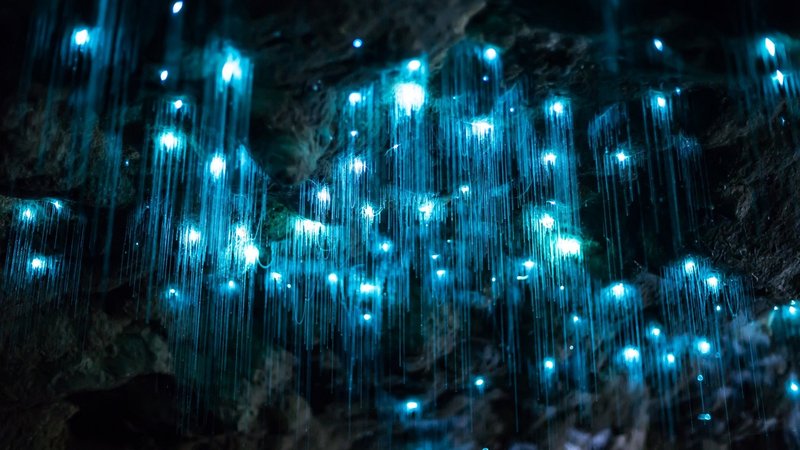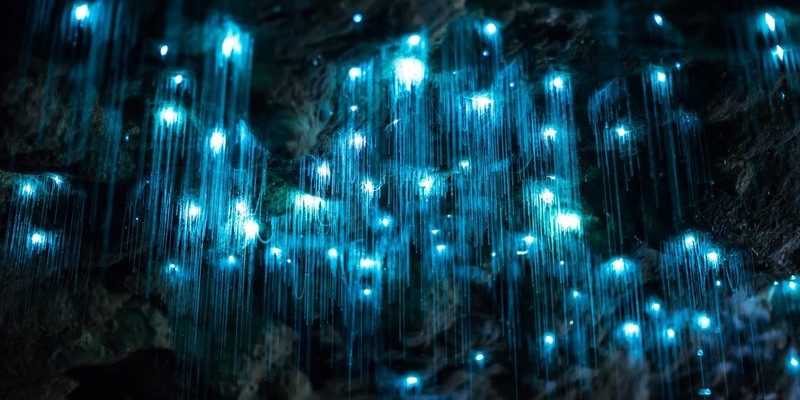
Glow worms, primarily found in caves and damp areas, produce a natural glow to attract prey and communicate. This light is crucial for their survival, but the advent of artificial lights has thrown a bit of a curveball in their natural world. It’s like introducing a new player into a beloved game. So, let’s dive into the reasons behind glow worms’ attraction to artificial light and what it means for them in today’s world.
What are Glow Worms?
Glow worms aren’t actually worms at all; they’re the larval stage of various types of beetles, typically from the family Lampyridae, which we often call fireflies. These little critters are known for their bioluminescence, meaning they can produce light through a chemical reaction in their bodies. This light is used primarily to lure in prey, like insects, which they then capture with their silk threads.
These fascinating creatures are often found in dark, humid environments like caves, forests, and even some urban areas. Their glowing lights create a beautiful sight against the darkness, resembling a galaxy on the ground. The glow serves a purpose—it’s their way of saying, “Hey, come closer!” to unsuspecting insects.
How Do Glow Worms Produce Light?
Glow worms make their enchanting glow through a process called bioluminescence. This occurs when a enzyme called luciferase reacts with a molecule called luciferin in the presence of oxygen. The result? A lovely light that shines brightly in the dark! It’s like their own version of a firework show, but without the noise.
But here’s the thing: glow worms use their light to attract not just prey but also potential mates. When males are on the prowl, they look for females who emit a softer, pulsing light. It’s a bit like sending out a signal in search of love, making them not just skilled hunters but also romantic souls in the insect world.
Why Are Glow Worms Attracted to Artificial Lights?
You might be wondering why glow worms are attracted to artificial light sources like porch bulbs or car headlights. The truth is, they often mistake these lights for the natural light sources they rely on, like the moon or stars. This confusion can lead them to fly toward artificial lights, which can be detrimental to their survival.
While it might seem harmless, this attraction can disorient them, making it harder to find food or mates. It’s like wandering off the path in a maze because you saw a bright, shiny object—only to realize too late that it wasn’t the way out. Their instinct to follow light can lead them into traps rather than safety.
The Impact of Artificial Light on Glow Worm Populations
The increasing presence of artificial lighting in our environment poses a significant challenge for glow worms. With more streetlights, car headlights, and buildings illuminated at night, these creatures are losing their natural habitats and breeding grounds. This shift in their environment affects not just their population but also the entire ecosystem.
Some studies suggest that constant exposure to artificial light can lead to decreased reproduction rates. If glow worms are consistently misled by bright lights, they may not reproduce as effectively. It’s crucial to understand the importance of maintaining natural light cycles in order to protect these magical creatures and ensure their survival.
Preserving Glow Worm Habitats
As we’ve seen, glow worms are incredibly sensitive to their environments. This means that preserving their natural habitats is essential for their survival. Simple steps can help create a more conducive environment for them. Here are some ideas:
- Limit artificial lighting: When possible, minimize the amount of light you use in areas where glow worms are known to thrive.
- Use motion sensor lights: These can reduce exposure time and help keep glow worms safe from disorientation.
- Choose yellow bulbs: Yellow light is less attractive to many insects, including glow worms, making it a safer option.
By taking these small but significant steps, we can help mitigate the impact of artificial lights and support the glow worm population in our communities.
Alternatives to Artificial Lights
If you need light for outdoor activities but want to protect glow worms, there are alternatives you can consider. For example, solar-powered lights are a great option. They offer illumination without the harsh effects of conventional lighting.
Also, consider using lanterns with low-intensity bulbs. These provide enough light without blinding nearby creatures or disrupting the natural ecosystem. It’s a win-win—you get the light you need, and the glow worms stay safe.
The Fascinating World of Glow Worms
Glow worms are remarkable creatures that add a touch of magic to our natural world. Their attraction to artificial light is not just a quirky behavior; it’s a sign of how human activities impact wildlife. Understanding their behavior helps us appreciate their role in the ecosystem and encourages us to act responsibly.
As we continue to admire the beauty of glow worms, let’s remember to be mindful of how our actions can affect their lives. By creating an environment that respects and protects these magical insects, we can ensure that future generations enjoy their enchanting glow.
In conclusion, glow worms are much more than just pretty lights in the dark. They play an essential role in our ecosystems, and their attraction to artificial light sources is a critical concern. By being aware of this issue, we can take steps to protect them and appreciate their beauty in a more sustainable way. So, the next time you see a glow worm shining bright, remember the little wonder behind that glow and the importance of preserving its home.

